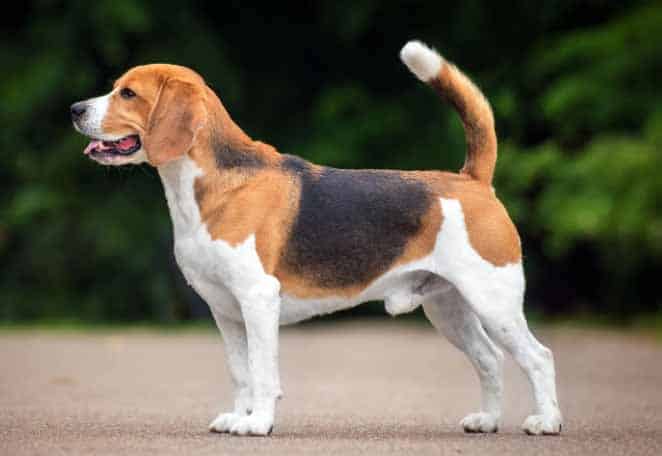According to recent studies, an estimated 56 percent of dogs in the United States are considered overweight or obese. So if you have an underweight or overweight dog, how do you identify a healthy weight goal? To answer this question, most people turn to resources on the Internet to research what the average weight range is for dogs. Unfortunately, because all dogs are different, it’s not that simple.
Weight ranges for dog breeds can be large and they usually vary from male to female as well. If you have a mixed breed dog, it makes things even more complicated. Fortunately, The Body Condition System (BCS), was developed by Purina veterinarians and scientists and is now the global standard for estimating pet weight in the veterinary industry. According to RuthAnn Lobos, DVM, CCRT, CVAT, Purina Senior Veterinarian, “The BCS is a nine-point scale that can help your veterinarian assess your dog’s physical condition and whether their weight is at a certain level. No need to adjust in any way.”
Severely Underweight
- Your dog looks bony from a distance
- Ribs, lumbar vertebrae (lower back bones) and pelvic (hip) bones can be seen under the skin
- Body fat isn’t discernible under the skin
- Loss of muscle mass is obvious
Underweight
- Your dog’s ribs are easily felt and may be visible under the skin
- Body fat may not be felt under the skin
- Some other bony spots may be seen under the skin
- From above, the waist (behind the ribs) is obvious
- From the side, the abdomen is significantly tucked up (rather than running straight back to the legs)
Ideal Weight
- Your dog’s ribs are easily felt without excess fat covering them (may or may not be visible)
- From above, the waist can be seen behind the ribs
- From the side, the abdomen is tucked up and does not run straight back to the legs
Overweight
- Your dog’s ribs can be felt with difficulty with fat covering them
- Noticeable fat deposits over the base of the tail and lumbar area (between pelvic bone and ribs on back)
- Your dog’s waist is absent or barely visible
- Abdominal tuck may be present
Severely Overweight
- Your dog has massive fat deposits over the thorax (from the neck to the abdomen), the spine, and the base of the tail
- Waist and abdominal tuck are absent
- Fat deposits are visible or can be felt under the skin on your dog’s neck and legs
- Your dog’s abdomen is obviously distended and hanging











